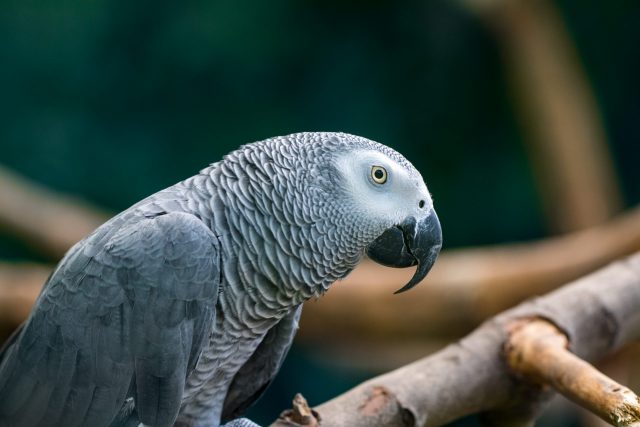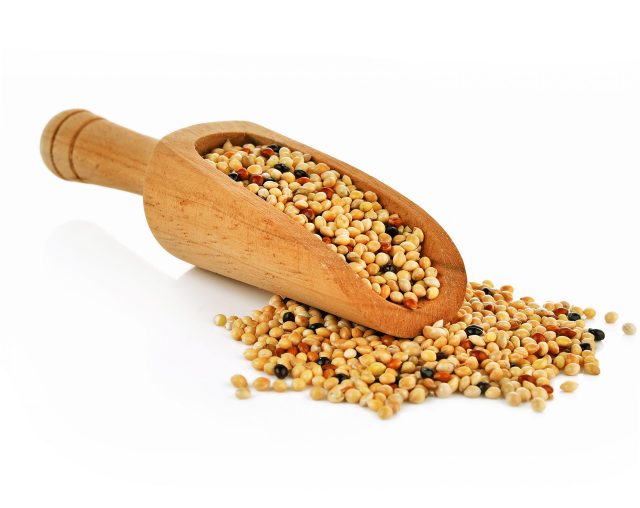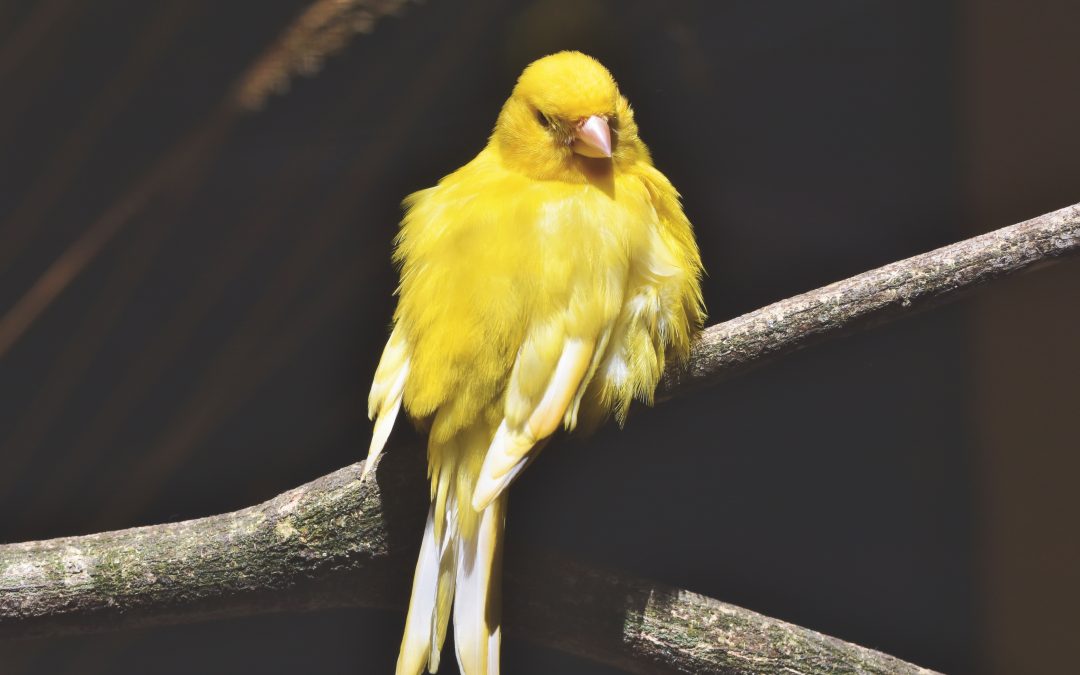Forget everything you think you know about how to properly feed your pet bird. That seed that you dish into your bird’s food bowl every day, and that she in turn gobbles up happily? It’s not as good for your bird as many, especially those in the pet food industry, would have you believe.
Think of it this way. Let’s say you really love steak, so that’s what you eat every day. Your diet doesn’t vary – your main staple every meal is that steak. Over time you notice you’re gaining some weight.

African Grey Parrots are popular pets
You’re not getting all the nutrients you need to keep you healthy. That’s exactly what happens to birds when they are on a seed-only diet.
Seeds are simply not meant to be the main staple of your bird’s diet. If you have a healthy bird, you’ll want to gradually switch her diet from seeds to pellets. Don’t switch your bird’s diet until your veterinarian has check her and deemed her to be in good health.
The most popular brand of pellets, sometimes found in exotic veterinarians’ offices and sold by some pet stores, is Zupreem, which makes pellets for specific birds, including parakeets (budgerigars), finches, and parrots. Other popular brands of bird pellets include Kaytee Exact, and Harrison’s Bird Foods.
While pellets are an essential part of your bird’s diet, it shouldn’t be the only component of your bird’s diet. In fact, your bird should eat plenty of fresh fruit, vegetables, and nuts. (Discuss with your veterinarian the best fruits, vegetables, and nuts for your type of bird.)
You can also purchase food blends (pasta and veggies, for example) that you simply stick in the microwave for five minutes, and your bird will enjoy a warm meal, a good idea
In addition to a good diet, your bird must eat and drink out of clean dishes or bowls. That means you should wash and dry them every day to avoid bacteria build up. And, always take out all the uneaten fresh foods at the end of the day.
Tips for Switching Diets for Pet Birds

Pet food for birds in a wood spoon
Once your veterinarian has given the okay to change your bird’s diet from seed-only to pellets, you’ll want start the process of changing. (Your vet will be able to give you advice as to how to go about making the switch.) Be forewarned that switching your bird from seeds to pellets isn’t necessarily going to be easy because most birds really love seeds.
During the process of switching diets, keep a close watch on your bird to make sure she’s eating enough food. She may lose weight during the process of changing, but you don’t want her to lose too much weight (which is why it’s so important you talk to your veterinarian before making the switch).
Many bird owners find they have to entice their birds to eat the pellets, so they mix the pellets in with their normal seeds. Each day put less seeds in with the pellets until there are no more seeds, and your bird is only eating pellets.
But, don’t just leave it at that. Birds are very intelligent and will often pick the seeds out, leaving the pellets. If you’re lucky, your bird won’t do that. If you’re not, you’re going to have to get creative. One way to entice birds to eat pellets is to mix them with something appetizing, like applesauce.
Other ways to entice your bird with pellets may include:
* Give them to her, in your hand if you can hand feed her, when she’s out enjoying her free time. That way, she’ll begin to associate eating the pellets with having fun.
* Put her normal seeds in her cage for about 30 minutes in the morning. After a half an hour, take the bowl of seeds out and put a bowl of pellets in. That way, logically speaking (though it doesn’t always work), she’ll get hungry and eat the pellets. If you notice she hasn’t eaten by the evening, do the same thing. Put the seeds in for a half an hour then replace them with pellets.
* Most birds, especially small birds like parakeets, love millet. If your bird refuses her pellets, put them in a blender then sprinkle millet in. Your bird won’t be able to eat the millet unless she eats the blended pellets.
* If your bird already eats fruit, put some pellets in the fruit. Make sure you take the fruit out of your bird’s cage after a few hours, to avoid it becoming spoiled.
If none of your efforts work, schedule another appointment with your veterinarian. He may be able to give you some other alternatives to making the switch. No matter how challenging it is to switch your bird over from an all-seed diet, do it. You want your bird to live a long, healthy life, and by ensuring she’s on a proper diet, her chances of living a long, healthy life increases.

